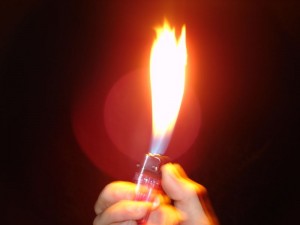 The Philadelphia region is cold in the winter. Residents can recall the “Polar Vortex.†Luckily, most houses contain furnaces that keep them warm. Caring for your furnace and understanding potential issues can make the difference between a cozy Winter versus needing an insurance adjuster in Philadelphia to help you pay for the damages using your insurance policy.
The Philadelphia region is cold in the winter. Residents can recall the “Polar Vortex.†Luckily, most houses contain furnaces that keep them warm. Caring for your furnace and understanding potential issues can make the difference between a cozy Winter versus needing an insurance adjuster in Philadelphia to help you pay for the damages using your insurance policy.
Recognizing Furnace Puff Backs and Reacting Quickly
Having a house with a malfunctioning heater can be quite a headache, especially in the winter. One of the most prominent issues is “puff backsâ€.
Puff backs occur when furnaces fail to light initially, causing something similar to a backfire in a car engine.
Puff backs can cause serious damage. The soot produced travels through all the duct-working of the heating system and contaminates the entire area. The soot is more than just dust. It often contains oily residues that can be hard if not impossible to completely clean up.
Encountering this problem is stressful and messy, and could leave you seeking an independent adjuster in Philadelphia to help cope with the cost of repairs. Especially when an insurance company tries to tell you that you’re at fault.
If you do experience a puff back, quickly contact us for emergency services. We know how to remove the soot through professional cleaning.
Prevent puff backs by keeping heaters free of dust, and inspect your heating system at least yearly. If you hear any noises or see any soot buildup near your furnace, immediately call your heating company.
Matching Your Furnace with Your Thermostat and Other Thermostat Issues
Thermostats need to be properly matched with furnaces, in order to serve the capacity and capabilities of each individual furnace. For example, a thermostat for a large hotel building is going to have different abilities than a thermostat used for a small townhouse. Gas furnaces need pairing with a proper thermostat, or else it can cause disorder.
Also, it’s important to understand what kind of batteries your thermostat requires. Some have replaceable batteries with a display telling the user how much charge it has left. Some are internally embedded and very hard or impossible to replace. Knowing these differences before you have a thermostat installed can save on time and headaches.
A Few Other Ways to Keep Furnaces In Check
Those two issues happen to be very common, and many people tackle them every year. However, there are also many things to look out for in your furnaces.
1) Frequently check your pilot lights and make sure they are lit, without any exposure to wind.
2) Check air filters to ensure that they are offering proper filtration and are not becoming clogged, restricting flow of air out of the furnace.
3) Check your furnaces blowers to make sure they work properly.
4) If your furnace does not heat at all, contact a maintenance professional after checking to make sure that the power and fuel lines are properly connected and that the thermostat is not acting erroneously.
This advice will save you lengthy phone calls with insurance companies and repair specialists. Taking these steps this winter will provide a comfortable place to live, regardless of the weather. If you do run into a snag, don’t hesitate to call AAA Public Adjusters. Your homeowner’s insurance policy will cover the damages to your home. We can be reached here on the internet, or over the phone at 1-800-410-5054 to help you. We are open 24 hours a day, seven days a week.




